Arguably the most important moment in any animal’s life— whether it be a whale, a human, or a mosquito— is the act of giving birth, of bringing a new member of the species into the world. It’s no wonder that biologists treat reproduction— from conception to birth to child-rearing— as vital not only for understanding an animal’s natural history, but also its conservation. While some species have had their reproduction studied ad nauseum (think pandas) we still know very little about how most species reproduce, including some large, charismatic mammals. Until ten years ago scientist’s knowledge of the reproductive habits of the giant armadillo— the world’s biggest— were basically regulated to speculation. But a long-term research project in the Brazilian Pantanal is changing that: last year researchers announced the first ever photos of a baby giant armadillo and have since recorded a second birth from another female.
The giant armadillo is the only member of the genus Priodontes and the largest member of the Xenarthra order (including anteaters and sloths) which goes back at least 65 million years. Despite its hefty bulk— weighing in at 50 kilograms (110 pounds)— the giant armadillo is notoriously difficult to observe. Its rarity, nocturnal habits, and burrowing lifestyle mean people who live in the area are often wholly ignorant they share the wilderness with these great, shelled beasts.
“After working in the field for eight years I still had never seen a giant armadillo,” said Arnaud Desbiez, the head of the Giant Armadillo Project in an interview with mongabay.com. “Then one day my wife returned from an expedition in the field having seen one in her study area. I could not believe it! A few months later the owner of the ranch found a fresh carcass recently killed by a puma. I decided I wanted to try to learn more about this elusive species.”
Desbiez, a French native who has lived in the Pantanal for 14 years, started the Giant Armadillo Project in 2010. Since then his dedicated team have employed camera traps and radio tracking to unlock the hidden lives of giant armadillos.
What they found was amazing: for one thing giant armadillos are far more maternal than expected. Scientists had thought that giant armadillo babies only spent six weeks with their mother, but the project’s research discovered that in fact juveniles spend at least ten times that amount learning from their mother.
“We have not been able to determine exactly when it becomes fully independent. Although it starts exploring and foraging on its own after six months, it continues sharing a burrow with or near its mother for several more months,” explained Desbiez, who is also the Regional Coordinator for Latin America for the Royal Zoological Society of Scotland (RZSS).
The project has also discovered that gestation lasts five months instead of four and that giant armadillos give birth to only one young at a time, instead of usually two as long believed. This information has huge impacts on the conservation of the massive, relict species.
“Each birth requires an incredibly high investment from the mother and we suspect they have a young only once every two years. Population growth rates are therefore very low. This explains why the population density of giant armadillos is so low, and why this species can so easily go locally extinct,” Desbiez said, who added that the project is now trying to determine how many young a female giant armadillo could have in a lifetime.
The giant armadillo is currently categorized as Vulnerable by the IUCN Red List and is imperiled by habitat loss and hunting.
“It feels like we have barely scratched the surface and we still have many more questions than answers,” noted Desbiez. “The question that intrigues me most is we still do not understand how these solitary creatures meet and interact. They have huge home ranges and overlap seems minimal. We believe communication is olfactory through scents left in the burrows and sand mounds.”
Desbiez said giant armadillos are not alone in the fact that researchers know very little about its most basic behaviors.
“The truth is only a few species have been the focus of long term studies and many endangered and even iconic species lack real studies,” he said. “The giant armadillo is only one among many species in South America about which we knew very little. I would blame this on an overall lack of funding for species research and conservation. There are so many species that need urgent attention and too few people able to dedicate their lives to them due to the scarcity of funds.”
Desbiez has received the bulk of his funding from zoological institutions, including the Royal Zoological Society of Scotland, which runs two zoos.
“Few people realize how engaged zoos are in species conservation throughout the world,” he said. “I think it is also remarkable that there are no giant armadillos in captivity in North America or Europe and yet these zoos still fund and support the project in multiple ways.”
Zoos have provided other support for Desbiez, including helping to raise awareness about the species. In fact this year, Desbiez’s project has partnered with the Brazilian Association for Zoos and Aquariums on a campaign to educate people about Brazil’s armadillo species (for materials in English, Desbiez says people can reach out to him). The campaign is timely as Brazilians see armadillos everywhere now:the three-banded armadillo is the mascot for this year’s World Cup in Brazil.
Desbiez said that the hours of patience, hard work, and frustration tracking one of the most cryptic big mammals on the planet pays off whenever he gets the rare opportunity of watching a giant armadillo in the wild.
“Seeing a giant armadillo is an extraordinary experience, and it continues to be every time. Does not matter how many times I have seen a giant armadillo walking in the night...each time, my heart races, I find it hard to breathe and my stomach does summersaults...it is always a surreal experience. You never get used to it and it feels like such a privilege to be able to observer this magnificent animal. Your imagination can easily run wild and you feel like you are time traveling, back to the Pleistocene.”
In a 2014 interview with mongabay.com, Arnaud Desbiez talks about the mating habits of giant armadillos, the difficulty of tracking these armored giants, and what he hopes to discover next.
INTERVIEW WITH ARNAUD DESBIEZ
Mongabay: What’s your background?
Arnaud Desbiez: I have been working in the Brazilian Pantanal for the past 14 years conducting research on several species ranging from peccaries to iguanas and questions ranging from impact of invasive species, hunting and land management. Before living in the Pantanal, I worked in several countries including Argentina, Belize, Bolivia and Nepal. As for academia, I majored in Zoology and minored in International Development from Mc Gill University, Canada; got a master’s degree in Natural Resource Management from Cranfield University, UK and a Ph.D in Biodiversity Management from the University of Kent at DICE (Durrell Institute for Conservation Ecology). Today I work as regional coordinator for conservation and research at the Royal Zoological Society of Scotland (RZSS). RZSS runs two of Scotland’s premier animal-based visitor attractions, Edinburgh Zoo and the Highland Wildlife Park, and is an independent Scottish charity.
Mongabay: What drew you to giant armadillos?
Arnaud Desbiez: When I first came to the Pantanal, I really hoped I would get to see a giant armadillo. I had worked with nine banded armadillos in Bolivia, and have loved armadillos since then. For one of the projects I was coordinating we had to estimate densities of mammals, and I walked over 2,000 kilometers and only saw a fresh giant armadillo burrow with the animal probably inside once. I was very intrigued by this species and could find very little information on it. After working in the field for eight years I still had never seen a giant armadillo. Then one day my wife returned from an expedition in the field having seen one in her study area. I could not believe it! A few months later the owner of the ranch found a fresh carcass recently killed by a puma. I decided I wanted to try to learn more about this elusive species.
Mongabay: How did the project start?
Arnaud Desbiez: In 2010, thanks to funding by the Royal Zoological Society of Scotland, I ran a small pilot study to see if it would be possible to try to start a long term project on the species. After a few months of hard work I got a few images. I then decided to focus all my time on the project, and finished the other projects I was involved in. I also called upon a friend and wildlife veterinarian, Danilo Kluyber, to come and help. He quit his job and came to work on the project. Despite a difficult beginning we learned a lot, and gained experience. A year later a biologist, Gabriel Massocato, joined the team. The team continues to consist of the three of us, another vet who consults and helps us when she can, Renata Santos, as well as many trainees and volunteers without whom we would never have progressed as much.
GIANT ARMADILLOS
Mongabay: Despite their large size and big geographical range, why do you think this species was ignored by scientists for so long?
Arnaud Desbiez: Giant armadillos occur at extremely low densities, spend most of their time underground in their deep burrows and only come out at night. These solitary animals are therefore very rarely seen and it is extremely hard to study such a cryptic species. Although I do think those are the main reasons, the truth is only a few species have been the focus of long term studies and many endangered and even iconic species lack real studies. The giant armadillo is only one among many species in South America about which we knew very little. I would blame this on an overall lack of funding for species research and conservation. There are so many species that need urgent attention and too few people able to dedicate their lives to them due to the scarcity of funds.
Besides the nine banded armadillo which is well studied, there is very little knowledge on most species of armadillos. Even very basic facts are missing for most of the 21 different species of armadillos. There is actually quite a bit of information on giant armadillos compared to some species such as the hairy long-nosed armadillo (Dasypus pilosus), or the greater fairy armadillo (Calyptophractus pilosus). A recent paper by Superina et al. (Mammal Review 44: 69-80) actually states “Although the giant armadillo Priodontes maximus is often mentioned as one of the least studied species, our analyses suggest that there are 14 even less well-known armadillo species”. This highlights the scarcity of information on armadillos in general.
Mongabay: Given their scarcity and elusive habitats, how have you managed to find and track giant armadillos?
Arnaud Desbiez: A lot of patience, determination and hard work. This project is really a team effort. Overall we spend two weeks a month in the field. The team has a lot of experience and knows which habitats giant armadillos prefer to select, however it really depends on luck to find a giant armadillo inside its burrow. These animals occur at such low densities, that our best bet is to find them while they rest inside their burrow. We have already been through a period of nine whole months without capturing a single new individual. This year we are going to test the use of detection dogs thanks to a partnership with a Brazilian NGO from the South. I really hope the dog manages to locate occupied burrows faster than we do.
Mongabay: You usually encounter giant armadillos via camera traps. Will you tell us, however, what it’s like to see one first hand in the wild?
Arnaud Desbiez: Seeing a giant armadillo is an extraordinary experience, and it continues to be every time. Does not matter how many times I have seen a giant armadillo walking in the nigh...each time, my heart races, I find it hard to breathe and my stomach does summersaults...it is always a surreal experience. You never get used to it and it feels like such a privilege to be able to observer this magnificent animal. Your imagination can easily run wild and you feel like you are time traveling, back to the Pleistocene. If you are down wind and very quiet you can actually observe them for quite a while. We have had several people visit the project and successfully see a wild giant armadillo with us. [Link to the John ball story you wrote]
GIANT ARMADILLO...BABIES
Mongabay: Your team was the first researchers to ever capture a giant armadillo baby on camera. How did you feel when you first saw the photos?
Arnaud Desbiez: It was very exciting to see the first picture as we had been expecting this for months.
Since November 2011, the Giant Armadillo Project team has been using both radio-telemetry and camera-traps to monitor, among others, an adult female giant armadillo. In January 2012, an adult male began sporadically appearing in camera-trap photos and visiting old burrows that the female had left unoccupied. In June 2012, for the first time, the female was observed sharing a burrow with this adult male and they remained in close proximity for a couple of days. This was the first time the study registered two animals together or in close proximity.
The adult female continued to be monitored, but the adult male disappeared from the area. The female resumed her regular behavior consisting of feeding at night and changing burrows every night or couple of nights. Our team believed she was getting bigger, but honestly this was more wishful thinking than anything else. Suddenly, in early November 2012, almost exactly five months after being seen with the male, the female began to re-use the same burrow for over 30 days. Although she left the burrow at night to forage, she always returned to the same burrow. It was only after three weeks that our camera-traps took a picture of the nose of the baby giant armadillo reaching out to its mother as she returned to the burrow. The first picture of the baby giant armadillo was taken four weeks after its estimated birth and we registered it as it changed burrows and accompanied its mother for the first time to another burrow 200 meters away. It was a real treat after so many months to finally see the baby giant armadillo.
In July 2013, we observed a change in behavior of one the females we were monitoring. She was returning to the same burrow and displaying some behaviors we had associated with child rearing. Once again after almost four weeks since the estimated time of birth we got the first pictures of the baby. We managed to monitor this baby armadillo for over six months through camera traps.
Mongabay: Will you tell us about the courtship process for giant armadillos?
Arnaud Desbiez: We do not have any data on courtship. We believe most communication between the armadillos is through markings and scents left in the burrows and on the sand mound in front of the burrows. For this reason, although it is a rare occurrence we sometimes catch males in our camera traps smelling or entering for a few minutes old burrows left by a female. A colleague of mine in French Guiana got pictures in her camera trap of giant armadillos mating. Mating occurred at night outside of the burrow. We believe that when we observed two armadillos sharing a burrow it was because the male wanted to stay near the female to mate with her the next night.
Mongabay: What have been some of the challenges in documenting baby giant armadillos?
Arnaud Desbiez: The biggest challenge is that it is a very rare occurrence. All observations are done through camera traps place outside the burrow. We usually leave up to three cameras around the burrow to be able to document several angles... Also as the female modifies the sand mound each time she comes in or out a camera can sometimes get buried or the modified sand mound can cover the beam that triggers the camera.
Mongabay: What have you learned about giant armadillo reproduction and babies over the past few years?
Arnaud Desbiez: Previous information available on giant armadillo reproduction was that the gestation lasted four months and the young were independent at six weeks of age. It was also believed they could have two a babies. We now know that the gestation lasts five months, that they only have one baby at a time and that the baby is completely dependent on its mother for the first six months… We have not been able to determine exactly when it becomes fully independent. Although it starts exploring and foraging on its own after six months, it continues sharing a burrow with or near its mother for several more months.
This information shows that each birth requires an incredibly high investment from the mother and we suspect they have a young only once every two years. Population growth rates are therefore very low. This explains why the population density of giant armadillos is so low, and why this species can so easily go locally extinct.
Mongabay: What remains a mystery?
Arnaud Desbiez: The next piece of information regarding giant armadillo reproduction we are seeking to understand is inter birth rates. How often do giant armadillos breed? We would also like to know how long they can live in order to estimate how many young a female can produce in her lifetime. We also need to learn when do individuals reach sexual maturity. It feels like we have barely scratched the surface and we still have many more questions than answers. The question that intrigues me most is we still do not understand how these solitary creatures meet and interact. They have huge home ranges and overlap seems minimal. We believe communication is olfactory through scents left in the burrows and sand mounds.
Mongabay: How many baby giant armadillos have you been able to track so far?
Arnaud Desbiez: So far we have been able to track two, and photograph another juvenile with its mother once. I have just learned that in Colombia a student, Carlos Aya, has also been able to photograph a young 3-4 month old baby giant armadillo with its mother.
CONSERVATION
Mongabay: How well do locals know giant armadillos?
Arnaud Desbiez: In the Pantanal very few people have ever seen a giant armadillo, due to the creature’s solitary nature, low densities, burrowing and nocturnal habits. For example the owner of the ranch who was born and raised on the ranch and lived there her whole life had never seen a giant armadillo before the project started. However many of the local people have heard of the species, but often believe it is already extinct. Many people have stories of giant armadillos from the past or that they have heard of.
Unfortunately there is also the belief by locals that if you see a giant armadillo you must kill it or you will die within one year of the sighting. For this reason, when we have a capture we call the workers from the ranch or ranches close to the capture site, so they can see the animal when we release it back to its burrow. Everyone is always fascinated by the animal and it has always been a very positive experience for all those who participated (and if you are wondering no one we know who has seen a giant armadillo with us has died...)
Mongabay: What are the major threats to giant armadillos?
Arnaud Desbiez: Giant armadillos are naturally rare throughout their distribution and are becoming even rarer because of anthropogenic impacts. Due to their low population densities and low reproductive rates they can rapidly become locally extinct. Habitat loss and hunting are the main threats to the species. Due to the large size of adult giant armadillos, these animals are a preferred hunting target of local communities and subsistence hunters in the Amazon. Although difficult to quantify, they may also be targeted by collectors for its giant middle fore claw. Other impacts contributing to the decline of populations include fire and road-kill. Virtually nothing is known about the effect of infectious diseases on giant armadillos.
Mongabay: The species is currently listed as Vulnerable by the IUCN Red List. Do you think this listing is adequate?
Arnaud Desbiez: Species listings from the red list should always be considered adequate. The IUCN Red List is set on precise criteria to evaluate the extinction risk of thousands of species and subspecies throughout the world. It is a peer reviewed process which relies on experts and depends on the best current information. This listing is for the species throughout its entire geographical distribution. Giant armadillos have a very large distribution and can be found throughout most of South America (east of the Andes).
Giant armadillos are extremely susceptible to extinction due to their very low population growth rates and high susceptibility to anthropogenic factors. Therefore the degree of threat of local extinction of populations in different ecosystems and biomes will be very different and much higher than their Vulnerable status may presume. For example, while we believe a healthy population may continue to survive in the Pantanal, in the devastated and fragmented cerrado few populations will be able to survive outside of protected areas. Unfortunately less than 2 percent of the cerrado is protected.
The armadillo (the three-banded in this case) is the mascot for this year’s World Cup in Brazil. Has this helped raise awareness of the giant armadillo and Brazil’s other armadillos species?
It is hard to evaluate this, but I would imagine that it will help. For example the Giant Armadillo Project partnered with the Brazilian Association for Zoos and Aquariums (SZB) this year to launch a coordinated campaign in all its member zoos to celebrate and learn about armadillos. The fact that an armadillo is the mascot of the world certainly helped to stimulate the launch of this campaign. All the materials will be available in English too and will also be used in many of the North American and European Zoos who fund us. A North American group Emerging Wildlife Leaders (EWCL) helped produce many of the materials in the campaign and many artists volunteered their time to put together these materials. The campaign will be launched end of May 2014 during the annual meeting of the Brazilian Association for Zoos and Aquariums.
Mongabay: How do we ensure protection of the Pantanal?
Arnaud Desbiez: What most people do not know is that over 95 percent of the Pantanal is privately owned. The only way to protect the pantanal is to work closely and in partnership with the landowners.
Mongabay: What advice would you have for other conservationists hoping to work cryptic and little-known species?
Arnaud Desbiez: I am not sure I have any specific advice. Everyone who conducts field work on wildlife must understand that it requires a lot of patience, determination and focus. The Giant Armadillo Project offers five short internships to national aspiring conservationists a year so they can have a chance to live firsthand what working in the field entails and requires. Very quickly the romantic vision they have had of field work vanishes! This opportunity gives young professionals a chance to evaluate if this is what they want to do or not. All the trainees report that they learn a lot during the internship, some come out more determined than ever that this is the career they want to pursue, while others realize there are other ways they can contribute to conservation.
Mongabay: A lot of your funding has come from zoos. Is it difficult to find funding for an animal that is little known and isn’t registered in any zoos?
Arnaud Desbiez: About 80 percent of the project funding comes from zoos mainly in North America and Europe. Amounts vary from a couple of hundred dollars to grants of up to US $25,000. Few people realize how engaged zoos are in species conservation throughout the world. I think it is also remarkable that there are no giant armadillos in captivity in North America or Europe and yet these zoos still fund and support the project in multiple ways.
I must also highlight that the contribution of zoos goes way beyond financial support. Many zoos actively help us to communicate project results to the media and public. This year for example we are launching an educational campaign throughout zoos in Brazil thanks to a partnership with the Brazilian Zoo association (SBZ) and Emerging Wildlife Conservation Leaders (EWCL). Materials will be available in both Portuguese and English so that all our partner zoos can use them in their programs. I have to highlight the role played in this endeavor by a keeper at Disney’s Wild Animal Kingdom, Laura Gruber, who has spent months developing environmental education materials for teachers to use in the classroom. Zoos also help us with the science, such as reviewing veterinary protocols, or commenting on a paper and so many other ways. This project would not exist without the support from zoos.
Since 2010 the project has received funding from the following donors: Association Beauval Nature pour la Conservation et la Recherche (France); Association Française des Parcs Zoologiques – AfdPZ (France); l´Association Jean-Marc Vichard pour la Conservation (France); Bergen County Zoo (USA); Brevard Zoo (USA); Cerza Zoo (France) ; Chester zoo (UK); Columbus Zoo (USA); Conservation des Espèces et des Populations Animales (CEPA) (France) ; Disney Worldwide Conservation Fund (DWCF)(USA); Fresno Chaffee Zoo Wildlife Conservation Fund (USA) ; Houston Zoo (USA) ; Idea Wild (USA); Oklahoma City Zoo (USA); Minnesota Zoo (USA) ; Nashville Zoo (USA), Natural Research (MMA) (UK); Papoose Conservation Wildlife Foundation (USA) ; Phoenix Zoo, (USA); Prins Bernhard fund for Nature (Holland); Riverbanks Zoo and Gardens (USA) ; Sea World Busch Gardens (USA); Taronga Zoo (Australia); Taiwan Forestry Bureau (Taiwan), private donation: George Rabb, Alexander Balkanski, Elias Sadalla, Doug & Sheila Grow and Jason Woolgar. Zoo Conservation Outreach Group (ZCOG) and its partners: the Chattanooga Zoo, Jacksonville Zoo, Naples Zoo and Caribbean Gardens, Salisbury Zoo-Chesapeake AAZK, Greenville Zoo and the San Antonio Zoo and Aquarium.
This article was originally written and published by Jeremy Hance, a contributing writer for news.mongabay.com. For the original article and more information, please click HERE.
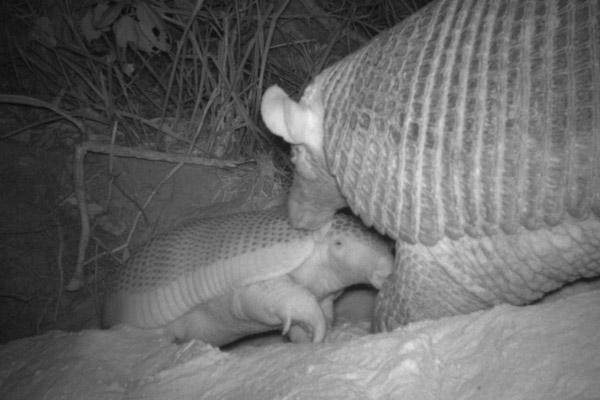
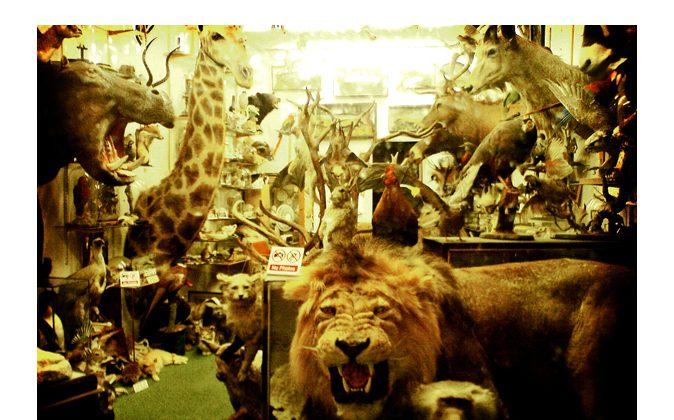
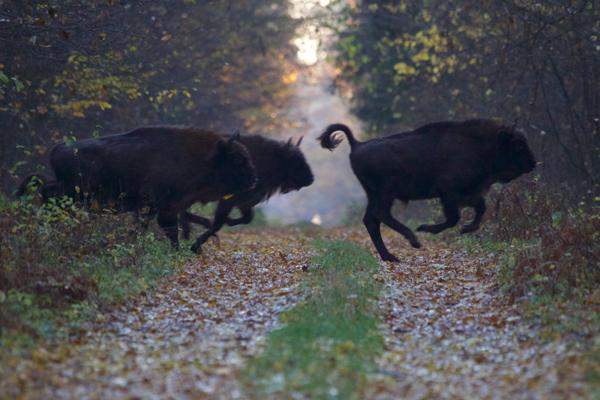
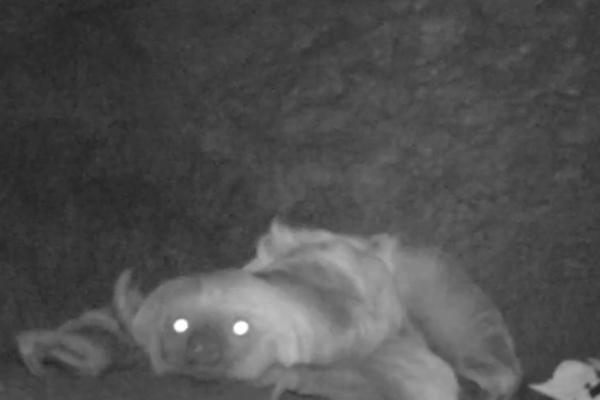
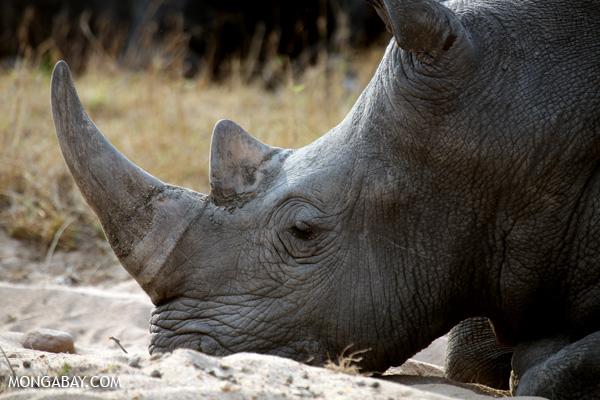
Friends Read Free